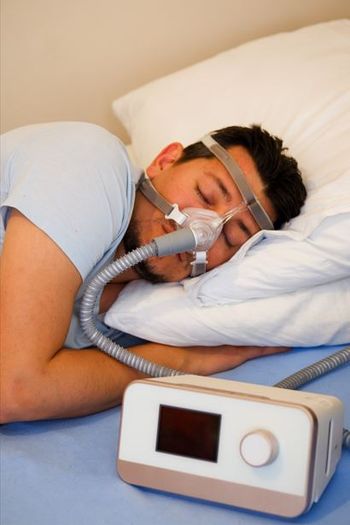
ASA: Nerve Stimulation Device Aids Stroke Recovery at Home
SAN FRANCISCO -- A transcutaneous electrical nerve stimulation (TENS) device used in stroke rehabilitation clinics may be effective for home use as well, researchers said here.
SAN FRANCISCO, Feb. 12 -- A transcutaneous electrical nerve stimulation (TENS) device used in stroke rehabilitation clinics may be effective for home use as well, researchers said here.
Combining nerve stimulation with task-training exercises at home significantly improved gait velocity and reduced calf spasms among stroke patients with crippling spasm, said Shamay Ng, Ph.D., of Hong Kong Polytechnic University, at the American Stroke Association meeting.
The researchers randomized 88 primarily male patients with moderate to severe calf spasm as a chronic consequence of stroke (12 months or more post-stroke) to four parallel treatment arms for four weeks.
One group used a nerve stimulation device for 20 one-hour sessions. Another group received the same treatment along with the task-related training in walking. A third group got placebo plus task-related training while a fourth served as a control. Participants returned to the clinic four or five times during the study to receive additional training in using the device and to advance their training exercises.
At the end of treatment, the researchers reported that scores on the Composite Spasticity Scale were significantly improved over baseline in both the nerve stimulation groups by more than 30 points (P<0.01 versus control). Combination therapy tended to be better than task-related training alone, but the difference was not significant.
Walking speed, or gait velocity, significantly improved by the end of treatment compared to baseline in the combination therapy group compared to the other therapy and control groups (P<0.01 for all).
At follow-up a month after treatment ended, the combination therapy group continued to have the most improved spasticity scores though statistical significance dropped out. Gait velocity remained significantly improved for the combination group compared to all other groups (P<0.01 for all).
TENS sends electrical current from a battery-powered device the size of a pocket radio through two electrodes attached to the skin.
Nerve stimulation devices are most commonly used for pain relief, but previous studies have shown it relieves calf spasms as well, Dr. Ng said.
The devices have also been used during rehabilitation for stroke, spinal cord injury, and multiple sclerosis but have not been incorporated into home-based rehabilitation training, commented Margaret Kelly-Hayes, Ed.D., R.N., of Boston University, who moderated a press conference discussing the study.
Relieving leg spasms helps get patients mobilized so they can progress with rehabilitation and increase functional skills, she added.
"Since a home-based program costs little to patients and taxpayers, our treatment protocol should be widely promoted to the stroke population," Dr. Ng said.
Newsletter
Enhance your clinical practice with the Patient Care newsletter, offering the latest evidence-based guidelines, diagnostic insights, and treatment strategies for primary care physicians.





















































































































































































































































































